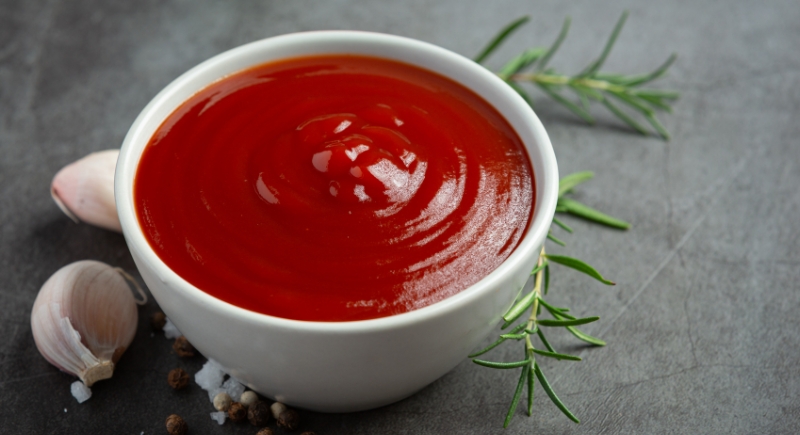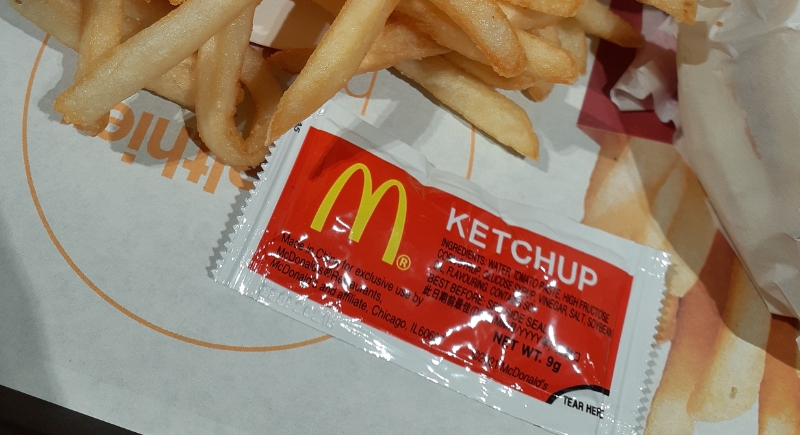This Tiny Number on Your Ketchup Packet Means Something
You’ve probably ripped open more ketchup packets than you can count. But there’s a tiny number most people don’t notice on the corner of those little packets.
That little detail has sparked years of speculation. Is it just another one of those things we’ll never understand unless we own our own factory? The numbers didn’t appear by accident, so surely there’s a simple explanation.
The Sweet vs. Sour Rumor

Image via Canva/ภาพของeakmoto271
If you’ve spent time online, you might have seen the theory that these numbers correspond to taste. According to the rumor, low numbers like 1 or 2 mean sweeter ketchup, while higher numbers like 7 or 8 lean tangier and more vinegar-forward. Some people even claim they’ve taste-tested packet after packet and swear they can tell the difference.
The story is so persistent that it’s become part of ketchup packet folklore. In 2011, a food blogger in the Philippines collected McDonald’s ketchup packets numbered 2 through 8 and did her own blind taste test. She insisted each one had a distinct flavor profile, with the higher numbers tasting tangier. Her readers jumped in with their own experiments, too. Reddit threads still pop up with people insisting they avoid certain numbers.
What Heinz Actually Says
The truth, though, is a lot more practical. Heinz is a big supplier behind most of those ketchup packets, and they have addressed the mystery directly.
In a 2015 post on Twitter (now X), the company explained that the numbers aren’t flavor indicators at all. They simply identify which filling line the packet came from. Heinz staff have also described how the system works.
Ketchup is cooked, cooled, and then portioned into packets using machines called filler heads. Each filler head gets its own number, which is printed on the packet corner. That way, if a quality control issue pops up, the company can quickly trace it back to the exact machine that produced it.
McDonald’s and the Batch Theory

Image via Wikimedia Commons/M28MOA STMOOD
Even McDonald’s has been tied to the ketchup packet speculation. Over a decade ago, a rumor spread in the Philippines that the numbers represented different batches of ketchup produced for the chain. The story went that if one batch had a problem, staff could easily identify and pull those packets out by looking at the numbers.
That explanation makes sense in the same way the Heinz filler head story does. In fact, people working in packaging have chimed in to say the same thing.
Some insist the numbers can also point to the packet’s position on a printing plate. If a defect shows up during printing, you’d know which “column” of packets to remove.
Why People Swear They Taste Different
So why do so many diners claim they can tell the taste apart? Part of it might be psychology. If someone hands you a ketchup packet and says, “This one’s tangier than the last,” your brain is primed to hunt for differences.
It’s the same effect that shows up in wine tastings when identical wines poured into different bottles suddenly seem distinct. The power of suggestion is strong, especially when it comes to food. But there’s also a simpler reason.
Ketchup packets aren’t always stored under the exact same conditions. Packets that sit under hot lights or in a car’s glove box for weeks might taste slightly different than fresh ones, and that could reinforce the myth. Plus, ketchup already balances sweetness and acidity, so it’s easy to convince yourself that the tiny shifts in flavor line up with those mysterious numbers.